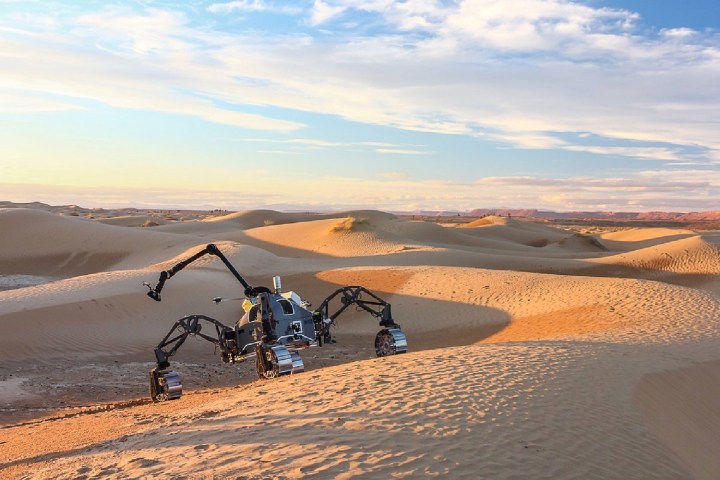
The above image may look like a scene from some as-yet-unannounced Hollywood adaptation of H.G. Wells’ The War of the Worlds. In fact, it’s a picture from recent tests which took place in the Sahara desert, the world’s largest hot desert region, where an autonomous driving software for future Mars rovers was put through its paces in the closest environment Earth has to a harsh Martian landscape.
The self-driving software was developed by researchers at King’s College London, the aerospace company Airbus, and software company Scisys. It improves on the current remote control Mars robots being used by allowing it to navigate on its own, as well as making decisions to carry out power-saving functions where necessary. Since it takes around eight minutes for commands to be sent from Earth to Mars, making it possible for the present generation Mars rovers to be able to move, this could prove especially useful.
During the Sahara trial, the software was tested on a four-wheeled rover called Sherpa. It traveled for more than 1.4 kilometers without any human intervention. The hope is that it should make it possible for Mars rovers to travel up to one kilometer per day. That might sound a short distance, but it’s considerably more than the few dozen meters current Mars rovers are able to travel as a result of the technical challenges involved.
“Mars is a very difficult planet to land safely on, so it’s essential to maximize the discoveries from each successful touchdown,” Catherine Mealing-Jones, director of growth at the U.K. Space Agency, said in a statement. “New autonomous robot technology like this will help to further unlock Mars’ mysteries and I’m delighted that the U.K. is a key player.”
The U.K. Space Agency is the second largest European contributor to ExoMars, a two-part astrobiology project that aims to search for evidence of life on Mars. A joint mission on the part of the European Space Agency (ESA) and Russian space agency Roscosmos, the next phase of the project will involve landing a rover on Mars’ surface. This is scheduled for 2020, and the subsequent exploratory process will last through at least 2022.
Editors' Recommendations
- NASA’s Mars rover uses its self-driving smarts to navigate toughest route
- Relive NASA’s extraordinary Mars rover landing, one year on
- We now know what the self-driving Apple Car might look like
- Tesla pulls latest Full Self-Driving beta less than a day after release
- Waymo’s self-driving cars can’t get enough of one dead-end street


